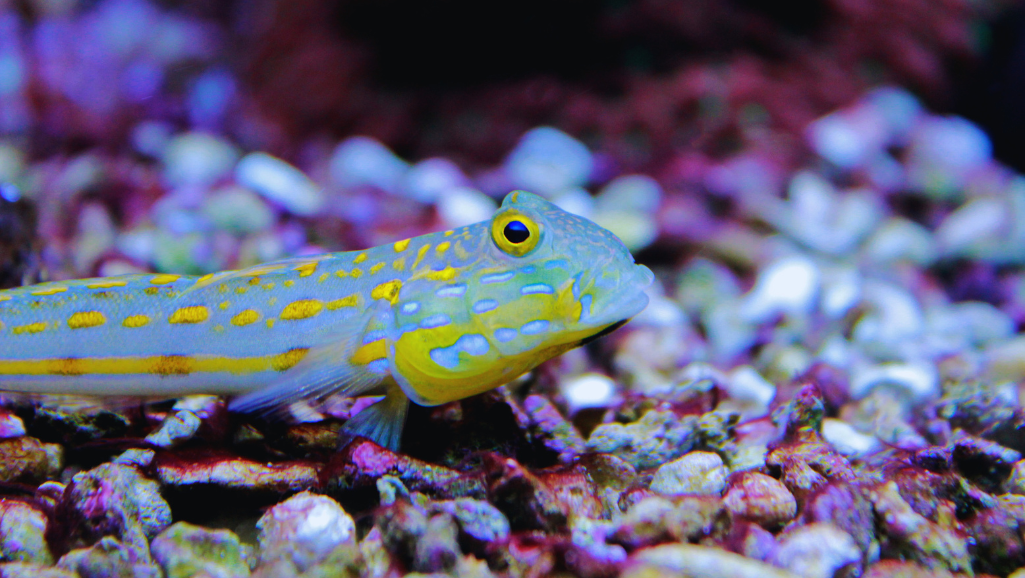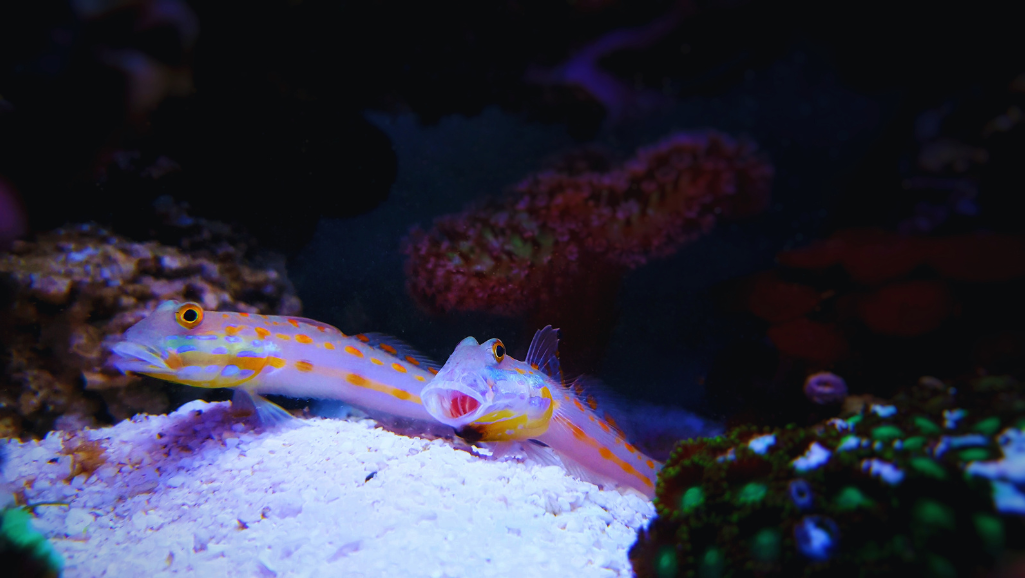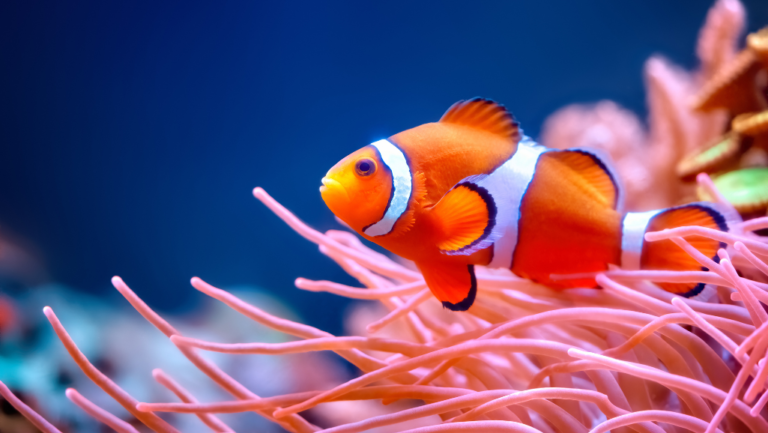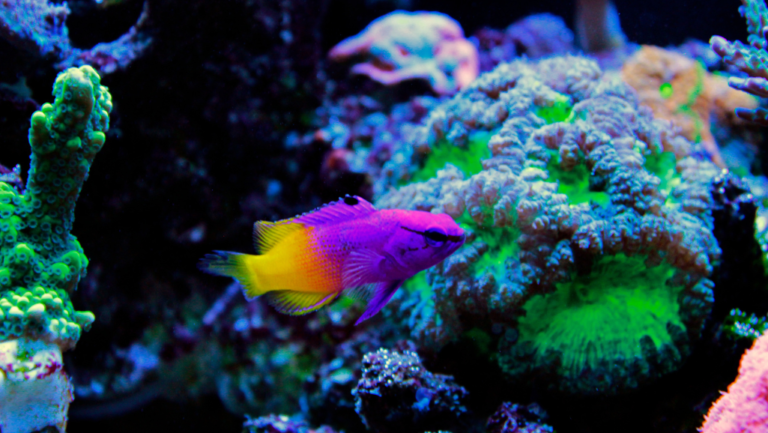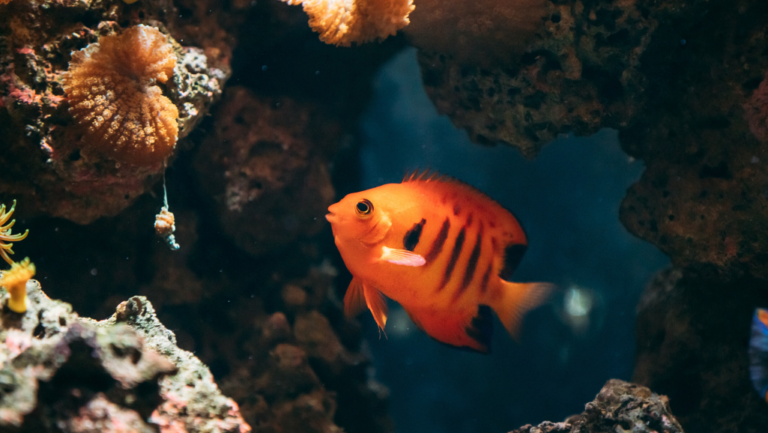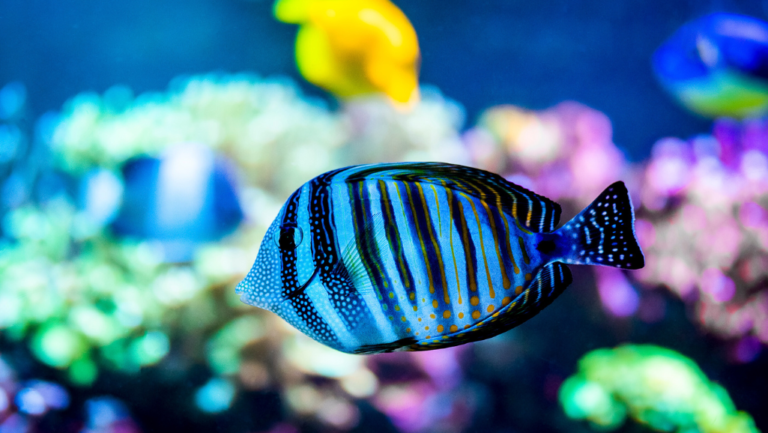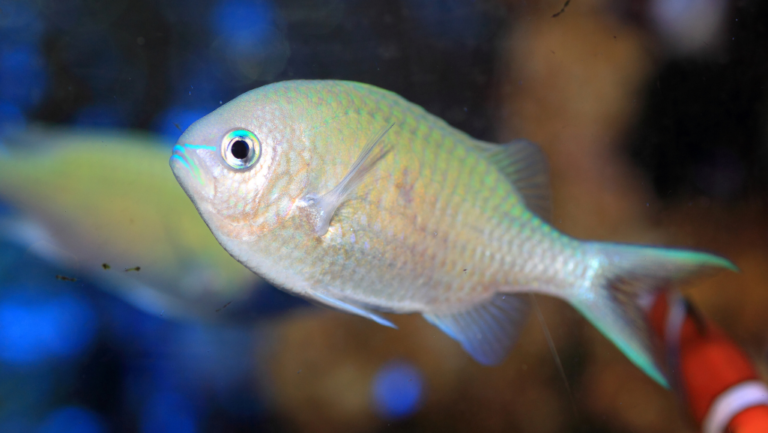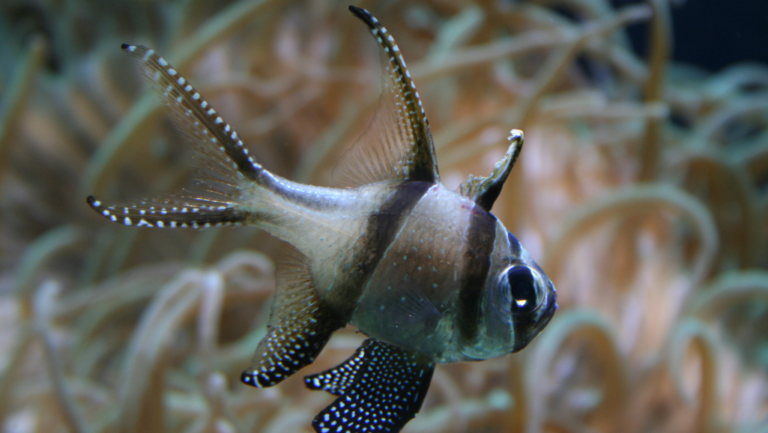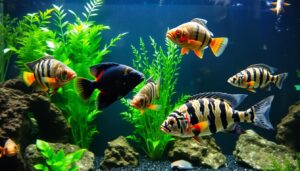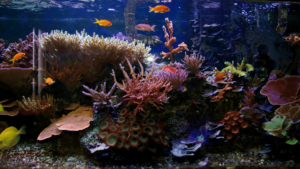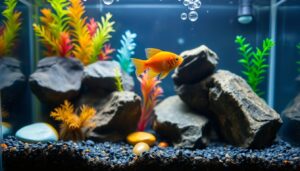Meet a compact, colorful companion that brings personality to reef setups. The watchman goby is easy to care for and fits well into community tanks. This species stays small, reaches about four inches, and thrives in a 20-gallon or larger aquarium.
Admire its alert head and bright body, often golden with tiny turquoise dots. Juveniles can show a steel-blue phase. Its independent eye movement helps spot threats while sharing a burrow with a pistol shrimp in a classic symbiotic relationship pistol lovers admire.
Choose captive-bred stock like ORA for hardier specimens. Keep stable water at 75–78°F, pH 7.7–8.5, and salinity near 1.023. Offer a carnivore diet and moderate flow. Use stable live rock and a sand bed so natural burrow behavior can shine.
Key Takeaways
- Easy care: Peaceful, reef-safe, and suitable for beginners.
- Best sourced captive-bred (ORA) for sustainability and health.
- Requires stable water, a sand substrate, and secure rockwork.
- Forms a notable partnership with a pistol shrimp; watch the burrow teamwork.
- Small size and calm temperament make it perfect for community tanks.
Watchman Goby Basics to Inspire Your Build
Begin your aquarium plan with a compact fish that favors sand, rock, and a shrimp companion. These small species bring color and active behavior to home tanks while staying peaceful with most community mates.
Yellow vs. Pink Spotted: the yellow watchman goby shows a canary tone with turquoise dots near the head and dorsal area. The pink spotted type wears light yellow to tan tones with delicate pink and tiny iridescent blue spots along the body and fins.
Size is similar — up to about four inches — but plan space wisely. The yellow variety is fine from 20 gallons, while the pink spotted thrives in a 30-gallon or larger tank.
Both species are carnivorous in diet, favor sand beds, and form a famous symbiotic relationship with a pistol shrimp. Their fused pelvic fins act like a suction disc, helping these gobies perch on rock and watch the water for food and threats.
- Color and spots pick the visual star of your display.
- Provide sand, live rock, and clear sightlines for natural behavior.
- Expect shy moments, then confident guarding of their burrow.
How to Set Up a Thriving Tank for the Watchman Goby
Start your build with a stable tank that gives small reef species room to settle and a steady environment to thrive.
Tank Size and Stability
Treat 20 gallons as the true starting line. A 20-gallon aquarium gives the yellow watchman goby enough space and stable water to reduce stress. Larger volumes smooth out swings in temperature and chemistry and make maintenance easier.
Substrate and Burrow Design
Use fine sand 2–3 inches deep so the pistol shrimp can excavate natural tunnels. This substrate supports burrow behavior and keeps the pair active and confident.
Rockwork and Hiding Spots
Build sturdy rockwork placed on the glass or supports before sand goes in. This prevents collapse when tunnels form. Leave small gaps at the base for a sheltered front door and set hiding spots behind ledges.
Water Parameters Made Simple
Keep water steady: 75–78°F, pH 7.7–8.5, specific gravity 1.020–1.026. Aim for undetectable ammonia and nitrite, nitrate under 20 ppm, and moderate flow to move waste without destroying the burrow.
Reef-Safe Community Planning & Pistol Shrimp Partnership
These fish are reef-safe with soft, LPS, and SPS corals and most invertebrates. For a natural symbiotic relationship pistol pairing, add a compatible pistol shrimp and create a protected tunnel entrance. For practical setup tips, see this detailed care guide.
- Fine sand substrate enables burrow building.
- Robust rockwork prevents collapses from digging.
- Stable water and moderate flow keep habitat healthy.
Day-to-Day Care: Feeding, Behavior, and Peaceful Pairings
A simple daily routine—targeted meals, protected burrows, and compatible tank mates—keeps these fish thriving.
Diet and foods: Build a carnivore menu around frozen mysis and varied marine fare. Add small sinking pellets for bottom feeding but avoid large portions. Best practice: target-feed at the burrow entrance so both the goby and any shrimp partner can eat.
Feeding rhythm
Feed light, consistent meals twice per day. Aim for 2–3 small servings across the day to prevent nutrient spikes and algae growth.
Behavior and hiding
Expect confident guarding near the burrow but shy retreats when startled. A tight, netted lid reduces jump risk and gives the fish secure hiding spots.
Mated pair or solo?
Pairs form strong bonds, but same-species aggression can rise as they age. If you want a bonded team, source a verified mated pair; otherwise keep a single fish per tank.
“Target small, regular feedings and secure shelter — your tank will reward you with calm, engaging behavior.”
- Compatible tank mates: clownfish, cardinalfish, firefish, small wrasses.
- Safe invertebrates: cleaner shrimp, hermits, snails, urchins, and a pistol shrimp partner.
- Adjust flow and rock placement if hiding or uneaten food collects near rock.
Conclusion
Simple care and natural partnerships let this aquarium favorite shine without constant fuss.
The watchman goby is reef-safe and peaceful, thriving in a 20-gallon setup with clean sand, sturdy rock, and moderate flow.
Its compact body and alert head create constant interest, while a compatible pistol partner adds lively tunnel behavior.
Pink-spotted variants may prefer slightly larger tanks, and gobies can show mild territoriality unless kept as a bonded pair.
Use this article as a blueprint: pick the right tank size, feed meaty foods in small, regular portions, and build a stable habitat.
When your pair feels secure, they return curious head tilts and steady presence that bring your reef to life.
